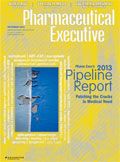Real World Insights
Commercial teams as well as patients can benefit from managed access programs.
Managed access programs (MAPs) are designed to provide access to medicines outside of the clinical and commercial setting, for patients who have no other available treatment options. Such programs provide patients with access to treatment in special cases, but companies can also use information gathered under compliant MAP programs to gain insight into how a product might perform in the real world, ahead of regulatory decisions and commercial launch.

Sue Barrowcliffe
When are MAPs relevant?
MAPs can be applicable whenever there are patients with unmet medical needs wanting access to a medicine which shows evidence of efficacy and safety relevant to their condition and which are unavailable through the normal commercial or clinical trial routes. This situation arises in a variety of circumstances:
» During Phase II/III for patients who fail to meet the strict inclusion/exclusion criteria of a clinical trial or access to a clinical trial site.
» In the time after clinical trials and before commercial availability, while waiting for NDA/marketing authorization submissions to be submitted and approval granted.
» Following first global approval of a new medicine, commercial availability in other markets can take months or years.
While keeping focus on creating access for patients, there is a unique opportunity to observe how the product is used and performs in this wider setting. By its very nature, the context of a MAP is closer to a real world setting than to a clinical trial setting. This information is useful to the manufacturer, and will also be welcomed by regulatory agencies and health technology appraisal bodies.
It is important to recognize that MAPs are neither clinical research nor seeding trials. In this column, we look at the types of insight that can be gained, and how the data might be used.
Key principles
MAPs utilize regulatory mechanisms in place around the world that allow a physician to treat a patient with an unlicensed medicine. These regulatory mechanisms have a variety of names including expanded access, named patient, and compassionate use, and the exact approach to be used may vary depending on whether the product is globally unlicensed or available in some countries. The key to such programs is that irrespective of the regulatory mechanism, it is the physician who requests access to a medicine that they feel would benefit the patient.
The scope for data capture beyond the required adverse event information includes patient demographics, medical history, baseline symptoms, drug and dispensing information, laboratory data, and outcomes. The general guidelines for collecting data as part of a MAP are meant to ensure that physicians don't have to perform additional tests beyond what he or she would normally do as part of his or her clinical practice, unless there are tests or follow-up required for safe use of the product. This is not a limitation but a benefit, since it keeps the environment as close to the "real world" as possible.
The intended use of the data from a MAP will have some influence over the approach and tools used. In all countries the collection of adverse event information is required and can be used to get a real-world view on the safety profile of a product. However, in countries where the treating physician is responsible for the reporting, it may be more challenging for the manufacturer to get comprehensive information on the safety profile. So in cases where a company wants to collect robust data on a specific outcome measure or follow an important laboratory safety parameter, it would be more appropriate to focus on countries that have group access mechanisms where a protocol covering the required assessments is agreed on with the regulatory agency, and physicians are obliged to comply.
Leveraging the data
From a regulatory point of view, the data can be enormously valuable in offering insight into the safety profile of the product outside the controlled environment of a clinical trial. In terms of planning for risk management post-launch, data from a MAP represents a bridge between the controlled, monitored environment of the clinical trial and the real-world usage patterns with commercial availability. In the 2009 preamble to the updated FDA rules on expanded access programs, the agency acknowledged the usefulness of data collected in support of an NDA, both from a safety and efficacy perspective.
In a review of 49 orphan drugs approved in the European Union between 2005 and August 2012, seven (14 percent) of the applications included safety data derived from a compassionate use program. In three cases information from the program was included in the safety sections of the approved summary of product characteristics (SmPC). In the case of Laboratoires Biocodex's Diacomit, an anti-epileptic approved in 2007 for the treatment of a rare, severe form of epilepsy in young children, the data from the French compassionate use program was quoted in the SmPC to provide some guidance to physicians on use of the product in children who were younger than those included in the main trial.
A number of studies have been published describing how data collected within MAPs can be used to help confirm or give indication of further study, and importantly, demonstrate possible benefits for patient subtypes excluded from or underrepresented in pivotal studies.
Genzyme's Mozobil (plerixafor) received approval from FDA in 2008, and EMA in 2009, to enhance mobilization of hematopoietic stem cells in patients with lymphoma and multiple myeloma. Registration trials had excluded patients who had failed to mobilize adequate numbers of peripheral blood stem cells via traditional approaches. A compassionate use program was initiated in 2008 in the European Union for these patients.
Among patients at risk to mobilize poorly, the subgroup most difficult to treat are those who have already failed mobilization attempts. A review of the compassionate use data revealed that approximately 75 percent of the patients who are hardest to mobilize were successfully rescued after one or more previous failures.
Similarly, a retrospective study of over 70 patients enrolled in a named patient program was used to assess the real-world clinical benefits of Celgene's Vidaza (azacitidine), for treatment of patients with lower risk myelodysplastic syndrome (MDS). Trial data demonstrated that Vidaza induces a significant survival advantage in patients with higher risk MDS. The trials however, included only a small number of patients with lower-risk disease. Data from lower-risk patients enrolled in the named patient program indicated that Vidaza may be a good therapeutic option for these patients. The study's authors conclude that:
"These observations represent real-world data, because patients were treated outside of the setting of a clinical trial, in which strict inclusion and exclusion criteria may have limited the generalizability of the findings."
Data derived from MAPs can also be used to create a more patient-focused approach to treatment. A study published last year in the British Journal of Urology International uses data from expanded access programs conducted in the United States and Europe, along with clinical experience, to help guide optimal use of several drugs for renal cell carcinoma. The authors noted that populations recruited for randomized clinical trials can under-represent patient subtypes, which can impact the clinician's ability to select the most appropriate agent for a particular patient. A retrospective analysis of MAP data yielded important insights into treatment of what the authors describe as "emerging" and "minority" patient subgroups.
Data collected during a MAP can also provide strategic insight to support internal decision making and planning. Companies can learn about demand levels by geography, key prescribing centers, treatment pathways, and off-label use by country. This sort of information, although not conclusive, can offer valuable insight to multiple departments within pharmaceutical organizations. The relevance of the information stretches beyond the medical and clinical departments and could extend to health economics and outcomes research.
When considering options for such data collection, a few best practices will help optimize efforts:
» Understand the normal treatment practice so data collection works in concert with physicians.
» Define your objectives for the data. Identify those areas in which you are seeking to gain greater insight and let that guide what data is collected. Be cognizant of the burden the data collection may put on the physician and refine accordingly.
» In some countries such as the United States, France, and Germany, there is a regulatory agency review of the protocol one intends to use for a MAP. If a company wants to collect data in any organized fashion and use it, putting a protocol in place is advisable, regardless of whether it's required by the national regulatory agency.
Sue Barrowcliffe is Global Director, Regulatory and Medical Strategy at Idis. She can be reached at sbarrowcliffe@idispharma.com.
